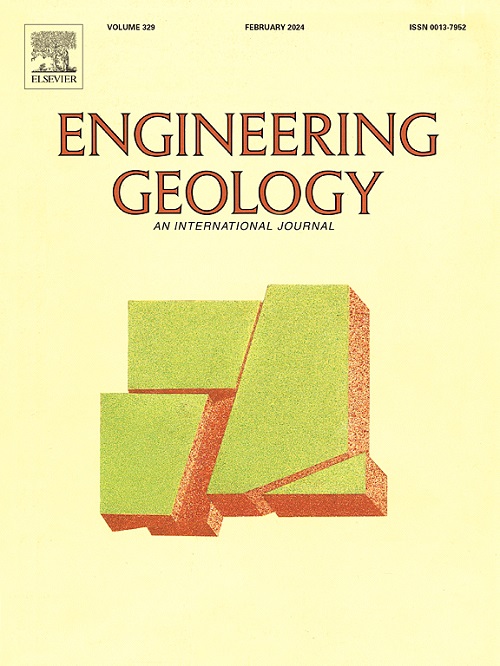探讨地震噪声信号与模拟河流流量数据之间的关系:以意大利西西里岛为例
IF 6.9
1区 工程技术
Q1 ENGINEERING, GEOLOGICAL
引用次数: 0
摘要
在这项工作中,我们分析和整合了靠近西西里岛的西米亚河(Gela,西西里岛)的一个地震台站记录的地震数据、安装在Gela水文流域内的气象站记录的降雨数据以及使用降雨-径流模型估计的流量数据。我们考虑了两个在持续时间、总降雨量、降雨强度和流量方面具有不同特征的气象事件:一个是发生在2022年10月13日的脉冲短期雷暴,另一个是发生在2023年2月的准美第奇太阳日期间的长时间扰动。特别是,我们探索了地震噪声(频谱含量、均方根振幅时间序列和极化特征)与气象水文参数(流域内降雨率、总降雨量、净降雨量以及沿河相关断面的流量)之间的关系。结果表明,只有持续时间较长的事件(如太阳神)才会在地震信号上留下痕迹,而均方根振幅和雨率时间序列之间的滞后时间与集水区浓度时间吻合。这些发现表明地震噪声与水文参数之间存在明显的相关性,使我们能够在无法获得传统河流流量数据的情况下,利用地震数据检索洪水事件的信息。本文章由计算机程序翻译,如有差异,请以英文原文为准。
Exploring the relationship between seismic noise signals and modeled river flow data: A case study from Sicily, Italy
In this work, we analyze and integrate the seismic data recorded by one seismic station installed close to the Cimia River (Gela, Sicily), the rainfall data recorded by the meteorological stations installed within the Gela hydrological basin, and the flow data estimated using a rainfall-runoff model. We take into account two meteorological events characterized by different features in terms of duration, total rainfall, rainfall intensity, and flow rate: an impulsive short-term thunderstorm that occurred on 13th October 2022, and a long-duration perturbation that took place in February 2023 during the quasi-Medicane Helios. In particular, we explore the relationships between seismic noise (in terms of spectral content, root mean square amplitude time series, and polarization features) and meteorological and hydrological parameters (specifically, rain rate, total rainfall, and net rainfall within the basin, as well as the flow rate at a relevant cross-section along the river). The results show that only the long-duration event (i.e., Helios) leaves a mark on the seismic signals and that the time lag obtained between the root mean square amplitude and rain rate time series matches with the catchment's concentration time. These findings show a clear correlation between seismic noise and hydrological parameters, allowing us to retrieve information about flood events using seismic data when traditional river discharge data are unavailable.
求助全文
通过发布文献求助,成功后即可免费获取论文全文。
去求助
来源期刊

Engineering Geology
地学-地球科学综合
CiteScore
13.70
自引率
12.20%
发文量
327
审稿时长
5.6 months
期刊介绍:
Engineering Geology, an international interdisciplinary journal, serves as a bridge between earth sciences and engineering, focusing on geological and geotechnical engineering. It welcomes studies with relevance to engineering, environmental concerns, and safety, catering to engineering geologists with backgrounds in geology or civil/mining engineering. Topics include applied geomorphology, structural geology, geophysics, geochemistry, environmental geology, hydrogeology, land use planning, natural hazards, remote sensing, soil and rock mechanics, and applied geotechnical engineering. The journal provides a platform for research at the intersection of geology and engineering disciplines.
 求助内容:
求助内容: 应助结果提醒方式:
应助结果提醒方式:


